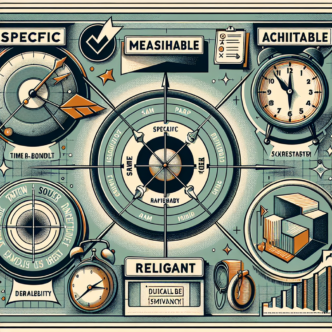Introduction
In the realm of Monitoring and Evaluation (M&E), setting effective indicators is crucial for tracking progress, measuring success, and ensuring accountability. Among the various types of indicators, SMART indicators stand out as particularly beneficial. But what are SMART indicators, and how can they be effectively integrated into your M&E processes? This comprehensive guide will walk you through the importance of SMART indicators in M&E, how to set them, and best practices to maximize their utility.
What Are SMART Indicators?
SMART is an acronym that stands for Specific, Measurable, Achievable, Relevant, and Time-bound. These criteria help in crafting clear and attainable objectives that can guide the monitoring and evaluation of projects and programs.
Specific
Indicators should be clear and specific, defining exactly what is to be measured. This clarity helps in reducing ambiguity and ensures that all stakeholders have a common understanding of the objectives.
Measurable
Indicators need to be quantifiable, allowing for objective assessment of progress. Measurability ensures that data can be collected to determine whether goals are being met.
Achievable
Indicators should be realistic and attainable within the given resources and constraints. Setting goals that are too ambitious can lead to frustration and disengagement.
Relevant
Indicators must be pertinent to the goals and objectives of the project. They should align with broader organizational or programmatic strategies.
Time-bound
Indicators should have a defined timeline, with clear deadlines for when results should be achieved. This helps in maintaining focus and urgency.
The Importance of SMART Indicators in M&E
SMART indicators are essential in M&E for several reasons:
- Clarity and Focus: They provide a clear framework that helps teams understand what they are aiming to achieve.
- Accountability: With well-defined indicators, accountability is easier to assign and track.
- Efficiency: They help in optimizing resource allocation by focusing efforts on achieving specific goals.
- Improved Decision-Making: SMART indicators facilitate informed decision-making based on accurate, relevant data.
How to Set SMART Indicators: A Step-by-Step Guide
Setting SMART indicators involves a structured approach. Here is a step-by-step guide to help you develop effective indicators for your M&E processes:
Step 1: Define the Objective
Start by clearly defining the objectives of your project or program. What are you trying to achieve? Ensure that the objectives are aligned with broader organizational goals.
Step 2: Make It Specific
Break down your objectives into specific actions or outcomes. Ask yourself: What exactly do I want to achieve? Who is involved? Where will this happen?
Step 3: Ensure Measurability
Determine how you will measure success. What data will you collect? What tools or methods will you use to collect and analyze this data?
Step 4: Check Achievability
Assess the feasibility of your objectives. Do you have the necessary resources, skills, and time to achieve the indicators? Adjust your goals to be realistic if necessary.
Step 5: Keep It Relevant
Ensure that your indicators are relevant to your project’s goals. They should contribute to broader objectives and be meaningful to stakeholders.
Step 6: Set a Time Frame
Establish a timeline for achieving your indicators. When do you expect to see results? Setting deadlines helps maintain momentum and focus.
Best Practices for M&E
In addition to setting SMART indicators, consider these best practices for effective monitoring and evaluation:
- Engage Stakeholders: Involve stakeholders in the indicator development process to ensure buy-in and relevance.
- Regular Review: Frequently review and adjust indicators as necessary to respond to changing contexts or insights gained.
- Use Technology: Leverage technological tools for data collection and analysis to improve efficiency and accuracy.
- Training and Capacity Building: Invest in training for staff to improve their skills in setting and measuring SMART indicators.
Conclusion
Developing SMART indicators is a critical skill in the field of Monitoring and Evaluation. By making your indicators Specific, Measurable, Achievable, Relevant, and Time-bound, you can enhance the effectiveness of your M&E processes. Remember to engage stakeholders, regularly review your indicators, and utilize technology to optimize your efforts. With these strategies, you can ensure that your M&E activities are robust, reliable, and valuable to your organization’s success.









